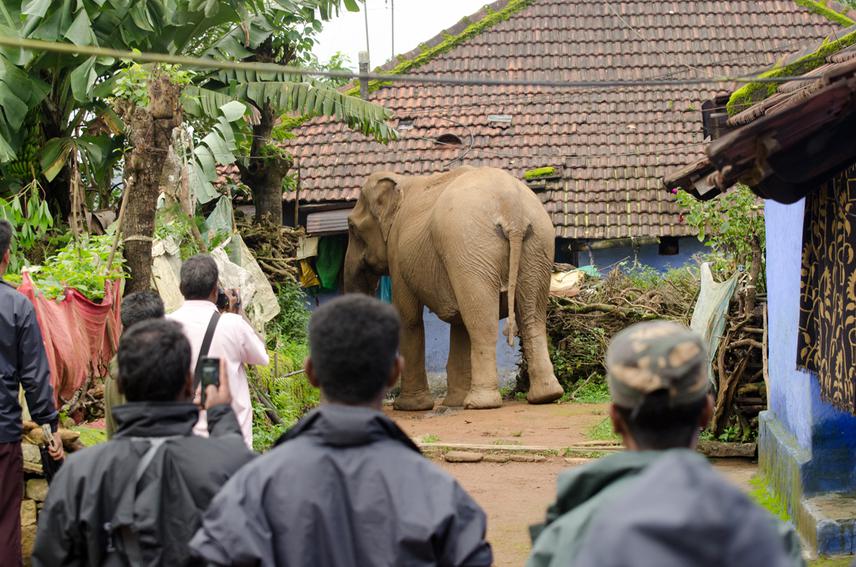Social media video featuring the project.
Living with Elephants
Promoting human-elephant coexistence by strengthening and implanting innovative early warning systems through local people participation and understanding efficacy of systems to deal with human-elephant conflicts in the Anamalai hills.

Elephant in a residential colony in Monica estate.
Resolution of conflicts between people and elephants is one of the major conservation issues in elephant range countries in Africa and Asia. Asian elephant (Elephas maximus) is a globally threatened highly endangered species facing elevated threats from shrinking natural habitats due to human developmental activities, resulting in intense human-elephant conflicts across Asia. The Valparai plateau in the Anamalai hills in Western Ghats of India, a 220 km² landscape matrix of tea, coffee, and Eucalyptus plantations with dotted rainforest fragments, is an important conservation area for Asian elephants in India. The natural vegetation in the form of rainforest fragments and riparian patches are the only refuges for elephants in plantations and facilitate their movements between surrounding protected areas across the plateau. The inevitable dependency of 80 – 100 elephants for their movement and livelihood of 70,000 people on plantations compels coexistence in the Valparai region. Loss of life due to elephants in accidental encounters was mainly due to lack of early intimation about elephant presence and their movement through plantations. Fatalities due to unexpected encounters resulted in trauma and fear in local communities and thus mounting pressure on elephants. Damage to property by elephants is mainly to food grain stores, school noon-meal centres, and residential houses. In this study, based on our long term monitoring, we are implementing locally appropriate, feasible, simple to adopt, and innovative early warning systems to safeguard human lives and reduce incidents of property damage.
The project intends to adopt a three–pronged approach. One, strengthening Elephant Information Network (EIN) using bulk SMS service for local residents and experimenting with automated voice announcement systems in public transport for travellers through participatory approach. Secondly, sensitization through interaction meetings with local people to adopt precautionary steps into their lifestyle. Holding workshops for Forest Department field personnel to adopt proactive methods in deflecting elephants away from residential localities. Third, efficacy of these measures will be analysed from people responses to SMS initiative and announcement devices and monitoring conflicts. We aim that these measures would be received positively to help in effective management of conflict and promote coexistence between people and elephants in the Anamalai hills. We also hope that this study would become a role model where it can be replicated in similar fragmented landscapes across Asia.
Social media video featuring the project.
Living with Elephants